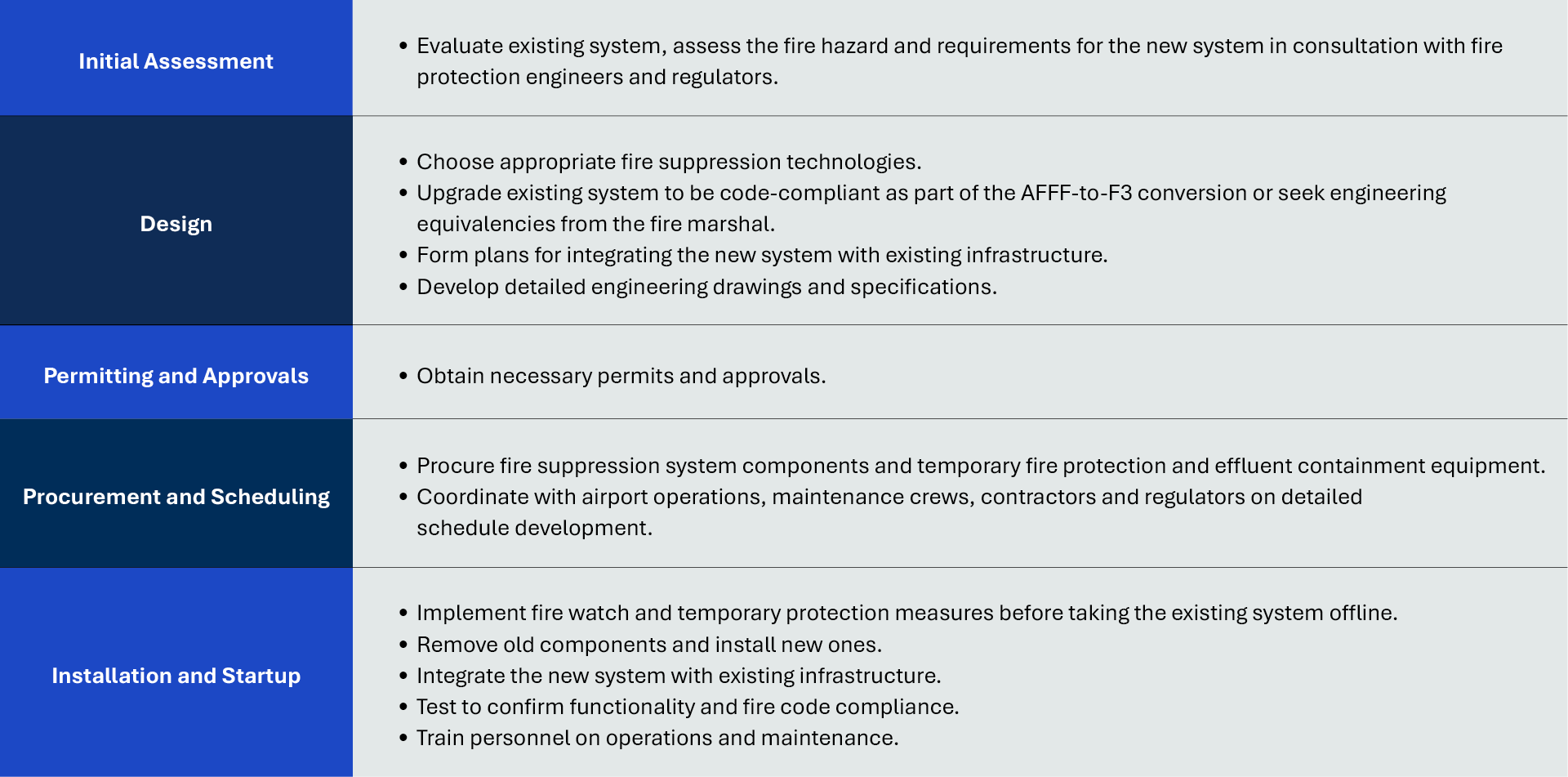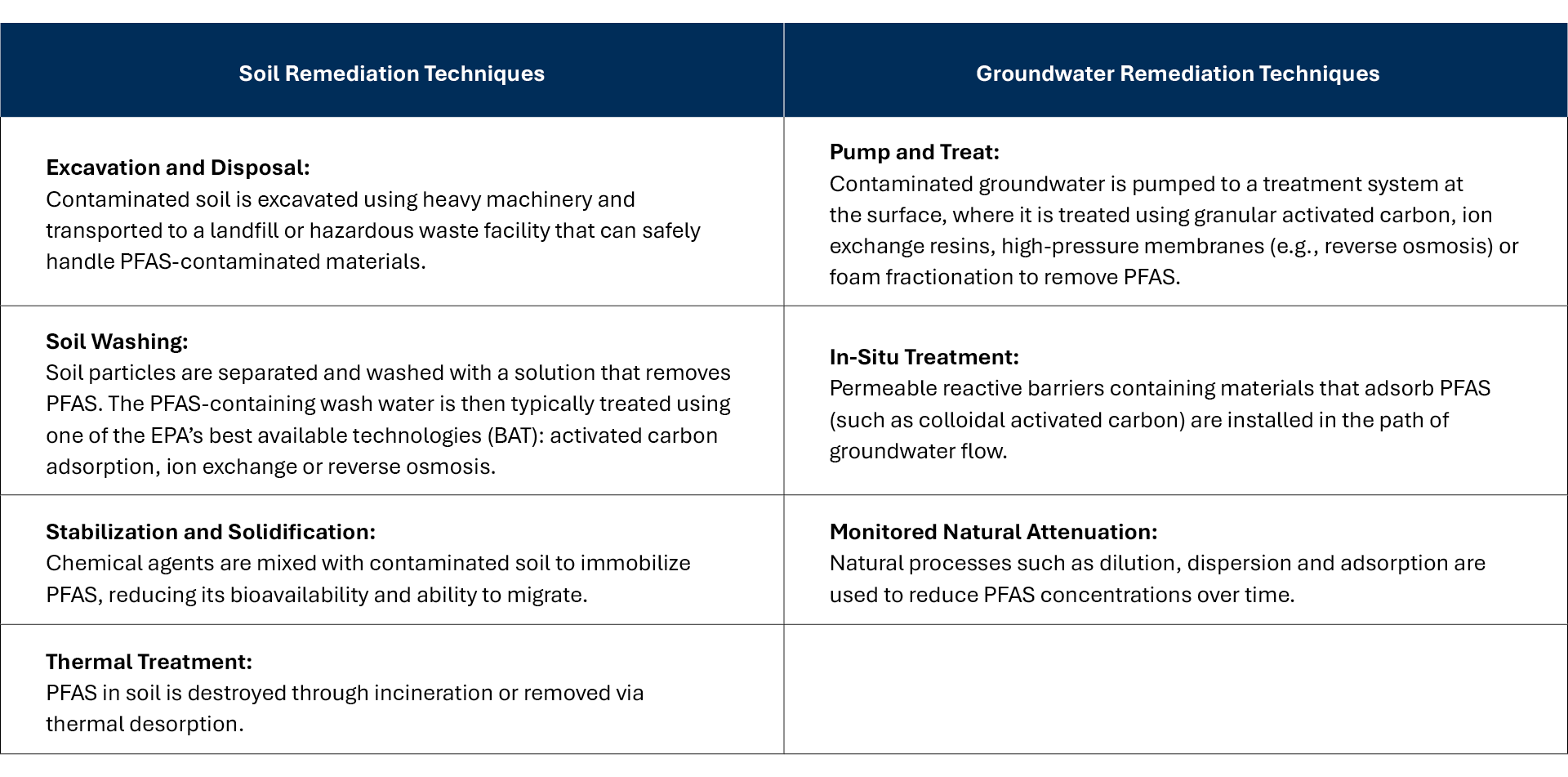Depending on the facility protected, those who rely on AFFF currently have multiple alternatives to consider, including water-only, high-expansion foams, fluorine-free low-expansion foams, clean agents and underfloor drainage systems. Determining the most suitable applications for each option can be complex, necessitating thorough risk and hazard evaluations and the guidance of fire protection professionals.
For example, water is an inexpensive and widely available fire suppressant, but it isn't as effective in flammable liquid fires as foam. It can take increased time to control and may not fully suppress a fire. However, when water-only systems are combined with other systems, such as underfloor drainage, the effectiveness increases. The water controls the spread of the flammable liquid fire while the fuel is simultaneously removed from the area of the incident.
High-expansion foam, on the other hand, is known for its ability to rapidly fill large spaces and remove oxygen from the fire, making it highly effective on three-dimensional fires in hangars. More effective than water-only in combating aviation fuel fires with similar effectiveness to AFFF. However, High-expansion foam does have some limitations that should be considered.
Fluorine-free low-expansion foams are designed to meet the same testing standards previously used for AFFF while minimizing the associated environmental and health risks of PFAS. Many consider these foams a viable alternative to AFFF. While these foams are continually improving and their technical envelope expanding, the application densities and pressure required at the discharge devices can exceed AFFF’s previous performance criteria, requiring additional system modifications when transitioning from AFFF to an F3 alternative.
Given the complexity of fire scenarios and the varying effectiveness of each alternative, it is crucial to leverage the experience of fire protection professionals when developing a comprehensive fire suppression strategy that addresses risks while minimizing environmental and health impacts.




